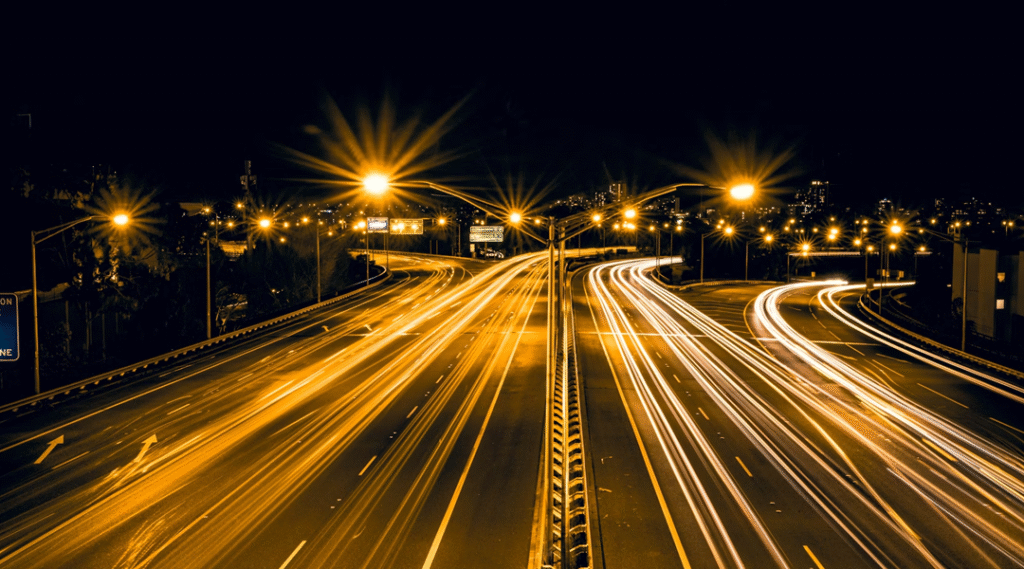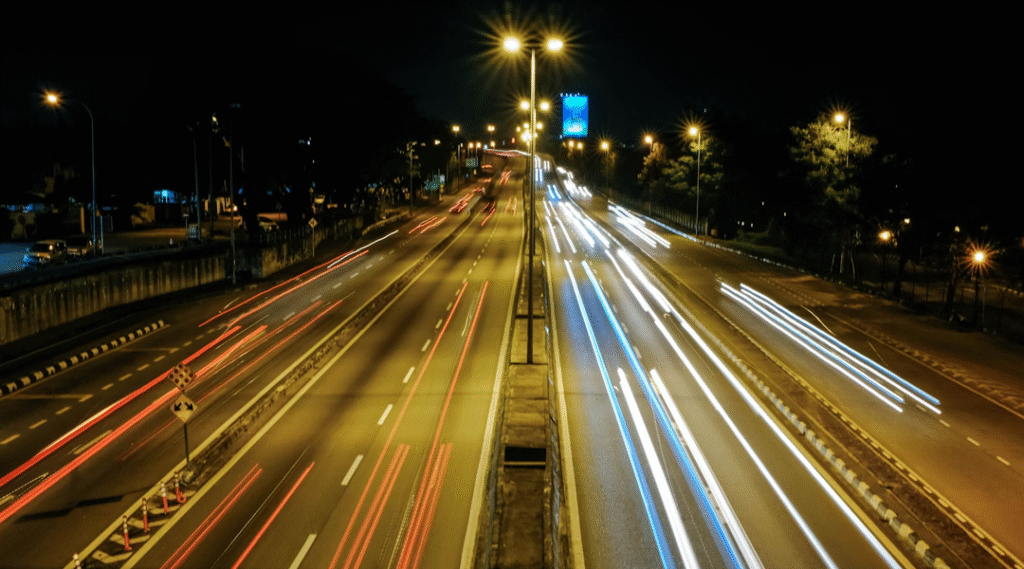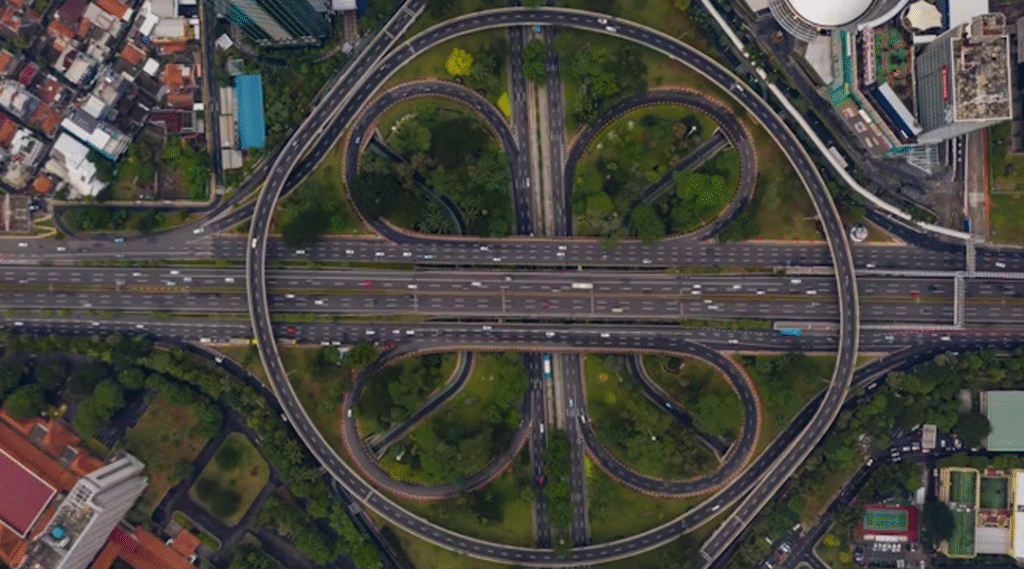In an era of rapid urbanization and ever‑growing vehicle fleets, traditional traffic management systems struggle to keep pace. Today’s cities are turning to smart traffic solutions—networks of interconnected devices, data analytics, and intelligent controls—to optimize flow, reduce congestion, and enhance safety. This article delves into the core technologies driving smart traffic, from the groundwork of IoT sensors to advanced AI algorithms and next‑generation communications.
1. IoT Sensors and Data Collection
At the heart of every smart traffic system lies an extensive network of Internet of Things (IoT) sensors, which continuously gather real‑time information about vehicles, pedestrians, and environmental conditions:
- Inductive Loop Detectors
Embedded beneath road surfaces, these magnetic coils detect passing vehicles by sensing changes in inductance. They’ve long been a staple for vehicle counts and basic signal timing. - Radar and Lidar Units
Mounted on poles or gantries, radar units track vehicle speed and distance, while lidar (light detection and ranging) systems create high‑resolution, three‑dimensional maps of traffic scenes—crucial for detecting cyclists and pedestrians. - Video Cameras with Edge Analytics
High‑definition cameras feed live video to edge‑computing modules, which run object‑detection algorithms on‑site. This reduces latency by processing data locally, enabling instant detection of incidents like stalled vehicles or red‑light violations. - Environmental Sensors
Air‑quality, temperature, and weather sensors feed data into traffic models to adjust signal timings; for example, reducing vehicle idling during high‑pollution events.
2. Connectivity: The Backbone of Smart Traffic
Collecting data is only half the battle—information must flow swiftly and reliably across the network:
- 5G and LTE Networks
The rollout of 5G significantly boosts bandwidth and reduces latency, allowing for real‑time video streaming and rapid coordination between vehicles and infrastructure. Where 5G isn’t yet available, enhanced LTE (4G) still provides robust connectivity for most sensor networks. - Dedicated Short‑Range Communications (DSRC)
Operating in the 5.9 GHz band, DSRC enables low‑latency, vehicle‑to‑infrastructure (V2I) messaging, such as broadcasting upcoming signal‑phase timings to on‑board units. - Cellular Vehicle‑to‑Everything (C‑V2X)
A complementary technology to DSRC, C‑V2X leverages standard cellular networks for both direct short‑range communication and broader network‑based messaging, facilitating vehicle‑to‑vehicle (V2V), V2I, and vehicle‑to‑pedestrian (V2P) exchanges. - Low‑Power Wide‑Area Networks (LPWAN)
Technologies like LoRaWAN and NB‑IoT serve cost‑sensitive applications—such as battery‑powered environmental sensors—where throughput is low but coverage and energy efficiency are critical.
3. Edge and Cloud Computing: Distributed Intelligence
Smart traffic management balances edge and cloud computing to optimize performance, cost, and reliability:
- Edge Computing Nodes
Deployed at intersections or within traffic signal cabinets, these miniature data centers run time‑sensitive applications—such as adaptive signal control—directly on locally gathered data, minimizing dependence on external networks. - Cloud Platforms
Centralized cloud servers aggregate data from across the city, hosting machine‑learning pipelines that refine predictive models. They also support long‑term storage, large‑scale analytics, and user‑facing dashboards. - Hybrid Architectures
Many cities adopt hybrid models, where edge nodes handle millisecond‑level decisions (e.g., when to extend a green phase for a waiting ambulance) while the cloud performs multi‑hour or multi‑day optimizations (e.g., adjusting corridor‑wide timing plans for morning versus evening peak).
4. AI and Machine Learning for Traffic Optimization
Going beyond static timing plans, modern systems employ AI to predict, adapt, and learn:
- Predictive Traffic Modeling
Machine‑learning models ingest historical flow patterns, calendar data (holidays, events), and weather forecasts to anticipate congestion hotspots hours—or even days—ahead. - Real‑Time Adaptive Signal Control
Reinforcement‑learning agents continuously tweak signal timings at intersections, learning which phasing sequences minimize queue lengths and delays under varying traffic loads. - Incident Detection and Response
Computer‑vision algorithms running on video feeds identify anomalies—such as dropped cargo or a pedestrian in a crosswalk outside a designated phase—and trigger alerts for rapid response. - Demand‑Responsive Routing
Integration with navigation apps allows systems to recommend alternative routes during incidents or surges, dynamically balancing load across the network.
5. Vehicle‑to‑Everything (V2X) Integration
True “smart traffic” emerges when vehicles actively participate in the ecosystem:
- V2I Communications
Traffic signals broadcast upcoming phase changes directly to connected vehicles, allowing on‑board systems to optimize speed profiles and even adjust cruise control for “green waves,” reducing stops. - V2V Safety Messages
Vehicles share basic safety messages—like sudden braking or skidding events—with nearby cars, enabling pre‑emptive actions to avoid collisions. - Platooning and Cooperative Driving
Groups of autonomous or semi‑autonomous vehicles form “platoons” on highways, maintaining tight gaps through synchronized accelerations and decelerations, which improves road throughput by up to 20%.
6. Security and Privacy Considerations
As connectivity and data proliferation grow, so do potential risks:
- Cybersecurity Measures
Multi‑layered defenses—including encrypted communication channels, intrusion detection systems at edge nodes, and strict authentication protocols—are essential to guard against hacking attempts that could disrupt traffic flow. - Data Anonymization
To protect individual privacy, vehicular and pedestrian identifiers must be hashed or aggregated before transmission to cloud servers. Compliance with regulations—such as the EU’s GDPR—mandates transparent data‑handling policies.
Final Thoughts
The convergence of IoT, high‑speed connectivity, distributed computing, and AI is revolutionizing how cities manage their most precious resource—road space. From sensor‑laden intersections that self‑optimize in real time to vehicles that communicate their intentions directly to infrastructure, each technological layer adds resilience, efficiency, and safety. As these individual components mature and integrate further, the vision of a seamless, intelligent traffic ecosystem—where congestion is minimized, emissions are cut, and every journey is smoother—moves ever closer to reality.
All articles on this special edition-SMART TRAFFIC:
(#1) What Is Smart Traffic? A Complete Beginner’s Guide
(#2) The Technologies Behind Smart Traffic: From IoT to AI
(#3) Reimagining Urban Roads: Smart Infrastructure in Action
(#4) How AI and Big Data Are Revolutionizing Traffic Management
(#5) Smart Traffic Meets Autonomous Vehicles: A Symbiotic Future
(#6) Smart Traffic Benefits and the Roadblocks Ahead
(#7) Global Smart Traffic Projects: Key Takeaways for Urban Mobility
(#8) Who’s Leading the Smart Traffic Revolution?
(#9) The Future of Smart Traffic: Key Trends for 2025 and Beyond
(#10)Building Ethical, Legal, and Secure Smart Traffic Systems
As for in-depth insight articles about AI tech, please visit our AI Tech Category here.
As for in-depth insight articles about Auto Tech, please visit our Auto Tech Category here.
As for in-depth insight articles about Smart IoT, please visit our Smart IoT Category here.
As for in-depth insight articles about Energy, please visit our Energy Category here.
If you want to save time for high-quality reading, please visit our Editors’ Pick here.



